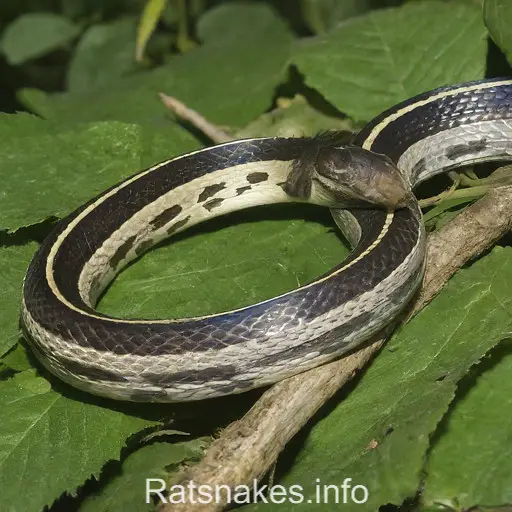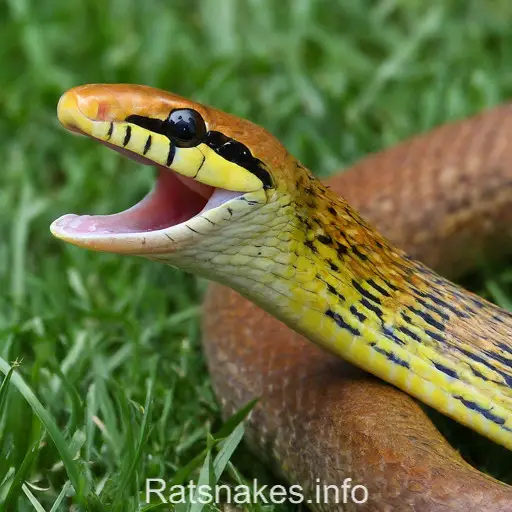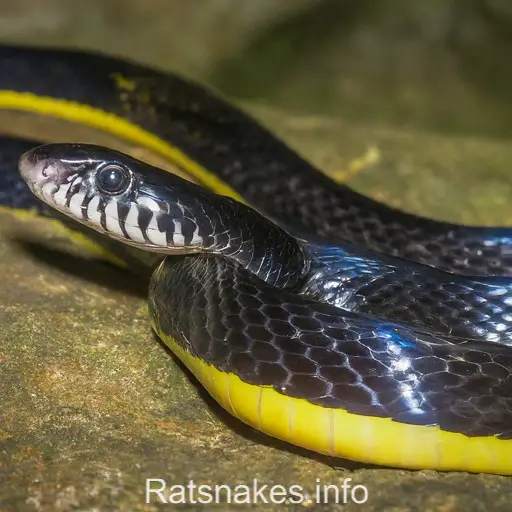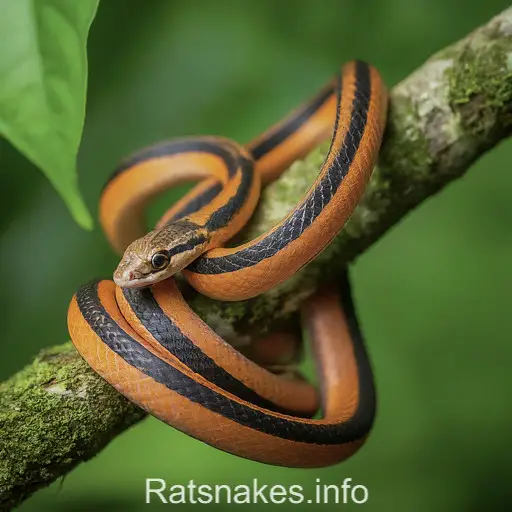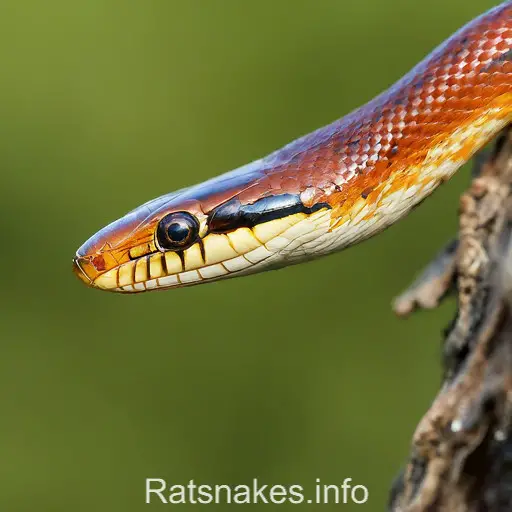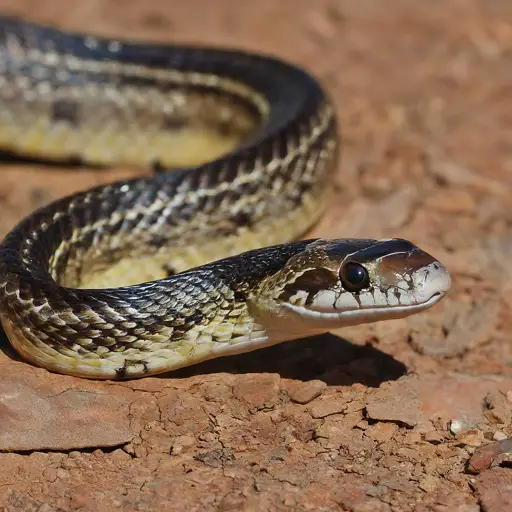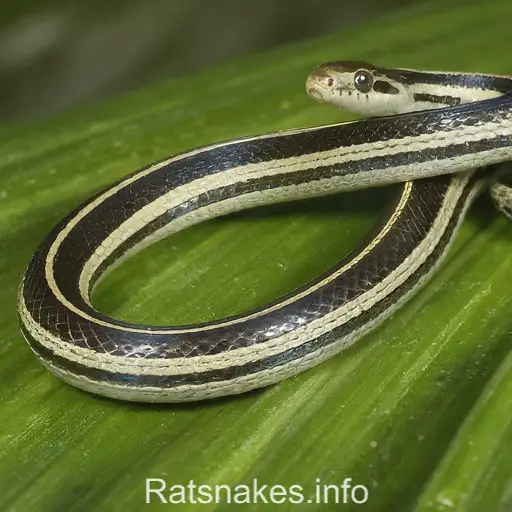
If you’re fascinated by the world of reptiles, the European ratsnake is a species that’s sure to capture your attention. These sleek and agile snakes are known for their striking appearance and fascinating behaviors. Join us as we delve into the intriguing world of the European ratsnake and uncover what makes this species so unique.
With their distinctive markings and impressive size, European ratsnakes are a sight to behold in the wild. Found in a variety of habitats across Europe, these snakes play a vital role in their ecosystems as skilled hunters and predators. In this article, we’ll explore the habits, diet, and natural history of the European ratsnake, shedding light on their importance in the natural world.
From their hunting techniques to their preferred habitats, European ratsnakes are a species that never fail to impress. Join us on a journey of discovery as we uncover the secrets of these remarkable snakes and gain a deeper understanding of their place in the intricate web of life.
Overview of European Ratsnake
When it comes to the European ratsnake, it’s essential to understand that these remarkable creatures play a crucial role in maintaining the ecological balance. These non-venomous snakes are skillful hunters known for their ability to control rodent populations, making them invaluable in agricultural settings.
The European ratsnake, also known as Elaphe longissima, can reach lengths of up to 6 feet, with a slender body and distinct coloration that aids in camouflaging among their natural habitats. These snakes are primarily found in woodland areas, grasslands, and meadows across Europe, where they thrive due to their adaptable nature.
Feeding primarily on rodents, birds, eggs, and occasionally insects, the European ratsnake uses its keen sense of smell and excellent vision to hunt and capture prey effectively. Their ability to climb trees and swim also adds to their hunting prowess, making them formidable predators in their ecosystems.
As cold-blooded reptiles, European ratsnakes rely on the sun to regulate their body temperature. This behavior, known as thermoregulation, is vital for their overall health and metabolic functions. By basking in the sun during the day, these snakes ensure they have enough energy for their hunting activities and other essential tasks.
Overall, the European ratsnake stands out as a fascinating species that deserves our admiration and respect for the critical role it plays in maintaining the delicate balance of nature. Understanding and appreciating these snakes can lead to a greater appreciation for the complexity and beauty of the natural world around us.
Physical Characteristics
When it comes to Physical Characteristics, the European ratsnake exhibits several traits that set it apart in the reptile world:
- Length: Adult European ratsnakes can reach lengths of up to 150 cm.
- Coloration: They showcase a stunning combination of black, brown, and gray scales, blending seamlessly with their surroundings.
- Eyes: These snakes have large, round eyes that aid in their excellent nocturnal vision.
- Scales: Their scales are smooth and slightly keeled, enhancing their ability to move swiftly and quietly.
- Tongue: Like all snakes, the European ratsnake uses its forked tongue to detect scent particles in the air.
- Jaw Structure: They have flexible jaws that allow them to swallow prey much larger than their own heads.
Understanding the unique physical characteristics of the European ratsnake gives us a glimpse into the remarkable adaptations that enable these creatures to thrive in their diverse habitats.
Habitat and Distribution
When it comes to habitat, European ratsnakes are highly adaptable creatures. They can thrive in a variety of environments, from forests and grasslands to farmland and urban areas. Their excellent climbing skills enable them to navigate through trees with ease, while also being able to slither swiftly on the ground.
In terms of distribution, these snakes can be found across a wide range, spanning from Western Europe to parts of Central Asia. They are particularly common in countries like Germany, France, Italy, and Spain, where suitable habitats are plentiful. European ratsnakes have also made their way into regions like Russia and Turkey, showcasing their ability to adapt to diverse climates.
These snakes tend to prefer moderate climates and are often spotted near water sources where prey is abundant. Their distribution is influenced by factors such as food availability, temperature, and shelter options. From lush forests to bustling urban areas, European ratsnakes have established themselves as resilient and resourceful inhabitants.
Behavior and Diet
When it comes to behavior, the European ratsnake displays a nocturnal nature, being most active during the night. They are predominantly carnivorous, feasting on a diet that consists mainly of small mammals, birds, eggs, and occasionally insects. These snakes are skilled hunters, using their excellent climbing abilities to pursue their prey.
European ratsnakes are known for being excellent swimmers, often preying on fish and amphibians near water bodies. Their adaptability shines through in their varied diet, allowing them to thrive in different ecosystems. With a combination of stealth, speed, and agility, they capture their prey with precision and efficiency.
In terms of behavior, these snakes are solitary creatures, only coming together during the mating season. Males engage in combat dances to compete for mating rights, highlighting their social interactions during this period. This behavior provides a fascinating glimpse into the mating rituals and hierarchy among European ratsnakes.
| Average Number of Prey Consumed per Week by European Ratsnake |
|---|
| Small mammals: 7-10 |
| Birds: 3-5 |
| Eggs: 10-15 |
| Insects: occasional |
Conservation Status
European ratsnakes have a Least Concern conservation status according to the International Union for Conservation of Nature (IUCN). This classification indicates that their populations are stable, and they are not facing significant threats that would endanger their survival.
One key factor contributing to their healthy population levels is their ability to thrive in diverse habitats and adapt to varying environmental conditions. Additionally, European ratsnakes are not heavily impacted by habitat loss or human activities compared to some other species, as they can coexist with human presence in urban and agricultural areas.
Conservation efforts primarily focus on preserving and protecting their natural habitats, such as ensuring the maintenance of suitable vegetation cover and managing ecosystems to support healthy prey populations for the snakes. Education and awareness programs also play a crucial role in promoting coexistence between humans and European ratsnakes, helping to reduce potential conflicts and mitigate negative interactions that could harm these fascinating reptiles.
As we continue to monitor and study European ratsnakes, ongoing research is essential in understanding their behavior, population dynamics, and any emerging threats that could jeopardize their conservation status in the future. By staying vigilant and actively participating in conservation initiatives, we can ensure the continued well-being of these remarkable snakes across their range.
Key Takeaways
- European ratsnakes play a crucial role in maintaining ecological balance by hunting rodents and controlling their populations in various habitats.
- These snakes have unique physical characteristics, such as their coloration, eyes, scales, tongue, and jaw structure, that enable them to thrive in diverse environments.
- European ratsnakes are adaptable creatures that can be found in forests, grasslands, farmlands, and urban areas across Western Europe to parts of Central Asia.
- They are skilled hunters with a varied diet, including small mammals, birds, eggs, and insects, and exhibit nocturnal behavior, being most active at night.
- Conservation efforts for European ratsnakes focus on preserving their natural habitats, promoting coexistence with humans, and monitoring population dynamics to ensure their continued well-being.
Conclusion
The European ratsnake’s adaptability and stable population status make it a remarkable species. Their ability to thrive in diverse habitats and coexist with humans showcases their resilience. Conservation efforts play a vital role in preserving their habitats and ensuring their continued well-being. Ongoing research is essential for understanding their behavior and population dynamics. By promoting coexistence and supporting conservation initiatives, we can contribute to the conservation of these fascinating reptiles.

